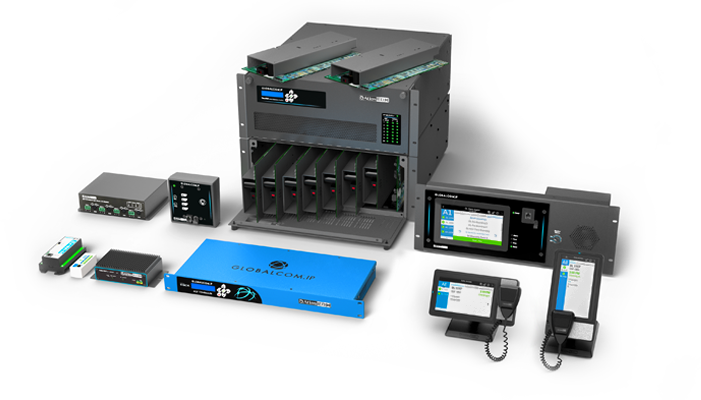Today’s airports are marvels of efficiency, meeting the needs of millions of passengers and thousands of flights every year with incredibly low failure rates or issues. In order to accommodate that level of volume and operate effectively at peak capacity, airport operators depend on a multitude of tightly integrated systems that must function continuously and without fault, 24/7/365.

Mass communication systems for airports (or public address systems) provide accurate and up-to-date information to travelers throughout the airport, including gate changes, boarding times, flight delays, baggage locations, and in rare occasions, emergency notifications. Modern airport announcement systems integrate with most of the airport’s critical alert systems, including fire/emergency, flight, gate, and baggage information systems.

For 30 years, WPS has been supporting critical communication systems for Class I and Class II airports throughout the East Coast and Mid-Atlantic. From service contracts to complete public address system overhauls, WPS has helped airports meet their operational, safety, and customer service goals by being an dependable partner at every stage of a project.
We’ve provided guidance, maintenance support, and integration solutions to airports for a wide variety of paging and communication systems, including:
- Automated, zone-specific notifications for flights, gates, and baggage
- Speech privacy/sound masking
- Digital signage for retail advertisements and airport alerts
- Outdoor, weatherproof audio systems
- Airport lounge audio and display systems
- ADA-compliant visual notification displays
- Network-based digital paging and communication stations
Upgrading to or MIGRATING FROM ANALOG OR HYBriD IED PA SYSTEM TO GLOBALCOM® .IP
Airports that are still operating an older IED Model 500ACS/505ACS Announcement Control System utilizing a largely analog audio architecture, may no longer be able to receive technical support due to significant parts shortages and software incompatibility with modern operating systems. As mass communication systems become increasingly important in the efficient operation of airports, older analog announcement systems may be at risk for intermittent failures and extended periods of downtime.
Because of the operational risks, we recommend an upgrade to the newest, state-of-the-art Atlas/IED GLOBALCOM® .IP ecosystem, which would extend the system’s digital framework, provide essential longevity, and support the latest and most popular customer service features and 3rd party integrations. Additionally, the upgrade would also return the system to “current” status, allowing for continued updates and on-going technical support.
Our system migration plan has been developed in concert with Atlas/IED to ensure:
- Minimal downtime and disruption
- Limited equipment replacement to minimize cost impacts
- Significant security improvements of the system
- Future interoperability with new upgrades and equipment replacements
- Compliance with all TSA, FAA, and NFPA requirements
- Availability of extended 24/7/365 warranty support and factory training for administration, operations, and IT/maintenance staff
AIRPORT COMMUNICATION SYSTEMS AT RISK
Model 500ACS Announcement Control System (Analog, 1982 to 1999)
IED Model 500ACS PA system is an older model that is entirely analog and was introduced in 1982. This system consists of various components, such as Model 500/508 Series Mic Stations, an analog 500ACS-M/ME Mainframe(s), a Model 540M Ambient Noise Analysis Mainframe, a Model 596 Monitor Test Systems, and Model 6000 Series Power Amplifier Mainframes. The power amplifier cards can hold 200W-70/100V or Dual 100W-70/110V. This system does not use Ethernet network components and operates using either MS DOS or earlier versions of MS Windows operating system. Due to their age and their analog/non-networked infrastructure being used, these systems require a significant amount of effort to maintain and are in need of an upgrade.
IES Model 505ACS Announcement Control System (Analog/Digital Hybrid, 1999 to 2006)
IED’s Model 500ACS is installed in a significant number of airports around the world and marked a significant improvement over the previous model by incorporating Ethernet-networked components and digital audio for the first time. The system includes the 510 and 520CPU Cards, 510R Digital Record Playback (DRP), and 510N Dynamic Audio Network. Making use of Ethernet networking via CobraNet digital audio, Model 528 Mic Stations can now be added to the system. Utilizing the same back-end components as the Model 500ACS system, such as the Model 540M Ambient Noise Analysis Mainframe, a Model 596 Monitor Test Systems, and Model 6000 Series Power Amplifier Mainframes with 200W-70/100V or Dual 100W-70/110V Power Amplifier Cards, small networked sub modules were added to allow these back-end components to be added to the network. This system is a hybrid combination of analog and digital components and runs on a later version of a Windows operating system.
IES Models 1100 and 1200 vACS Announcement Control Systems (2006 to 2016)
IES Models 1100 and 1200 vACS Announcement Control Systems are the newest and most advanced solutions, using all digital and Ethernet-networked components. These models include the Titan Model 9160 Integrated Power Amplifier Unit, which combines processing, amplifiers, and backup switching in one device. These systems also feature a small “Wintel” ACS that reduces equipment rack space as well as new digital telephony features and gigabit networking capabilities. Like the Model 505ACS, these models also use the reliable CobraNet protocol for audio routing between microphone stations and power amp frames, as well as between ACS nodes. Upgrades include Model 528 Mic Stations and Titan 9000 Series components for ambient noise analysis, fire alarm interfacing, and AODB/MUFIDS interfaces. Upgrading these systems is easy and requires little or no field device changes or reconfiguration.
ATLAS/IED GLOBALCOM® .IP ECOSYSTEM

GLOBALCOM® .IP is an airport notification and communication platform that integrates with critical airport systems to provide vital and up-to-the-minute information to passengers and airport staff, including:
- Flight Announcement System (FAS)
- Multi-User Flight Information Data System (FIDS or MUFIDS)
- Emergency Communication System (ECS)
- Text-to-Speech Courtesy Announcement System (T-CAS)
- Gate Information Data System (GIDS)
- Baggage Information Data System (BIDS)
- Evacuation Voice Alarm System (EVAC)

GLOBALCOM® .IP is designed as a complete, end-to-end mass communication solution for all airport operation centers, including landside operations, commercial operations, and support services.
The underlying design principles of the system also offer several key benefits to airport operators, including:
- Integrate with existing systems
- GLOBALCOM® can integrate and communicate with existing information systems such as flight/gate/baggage claim information, VoIP, public address, fire, security, and access control.
- Comply with life safety requirements
- GLOBALCOM® complies with NFPA72 fire and life safety standards, which require specific intelligible communications specifications for mass notification and EVAC systems.
- Support multiple languages
- Pre-recorded announcements available in multiple languages for international airport hubs.
- Utilize audio and video messaging
- Audible and visual messaging for guest information, including ADA-compliant visual messaging and FIDs and BIDs systems.
- Improve passenger experience
- Assist passengers by delivering highly intelligible, pre-recorded announcements, allowing them to navigate the airport without additional airport staff.
- Enhance system reliability
- Automated system scan constantly reviews system integrity, reports faults, confirms message delivery, and activates redundant components to ensure seamless operation in the event of failure.

If you are considering upgrading or migrating from an analog/hybrid communication system to a modern, IP-based infrastructure, please let us know. Our experienced engineers can perform a comprehensive on-site assessment of your existing system and provide a detailed plan of action with the necessary steps to bring your system to compliance.
Connect With An Expert
Photo credits: Upklyak on Freepik













